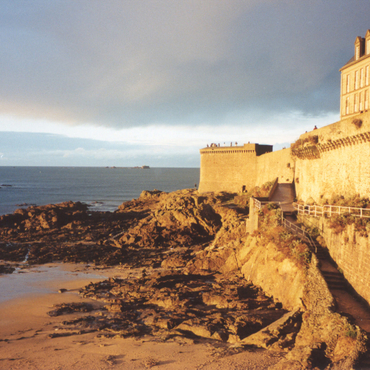
- Home
- The bay of Saint-Malo
- Saint-Malo circa 1700
By the mid-1500s, Saint-Malo was already said to be "packed with houses and heavily populated"; by the end of the following century, the city was literally gasping for air within its walls. Hemmed in by the sea with only 16 hectares of land, the population grew to more than 20,000. Industrial and trading activities broke out of these confines and colonised the entire area around the tidal port. The dune ridge that ran from Sillon to Rocabey became a site for windmills as well as shipyards, while two large-scale rope factories were established on the small islets in the centre of the tidal port. This penury of space benefited nearby Saint-Servan, which grew rapidly by building warehouses and shipyards, as well as a hospital.
By the end of the century, thanks to works carried out between 1689 and 1695 by the Marquis de Vauban, the city was well protected from attacks from the sea. However, it was defenceless against a land army, and in 1696 Vauban drafted an ambitious plan for building a wet dock, isolated behind a lock and protected by a fortified wall. The hostility of the citizenry brought the project to a standstill, and it was finally (and partially) constructed only in the 19th and 20th centuries.
The more wealthy ship-owners fled the cramped city and bought up houses in the surrounding area. As of 1650, and in increasing numbers after 1700, they took to building large second homes (known as malouinières) around Saint-Malo, hidden away behind high walls. Today, these granite houses symbolise the urbanisation of the countryside surrounding the city.

